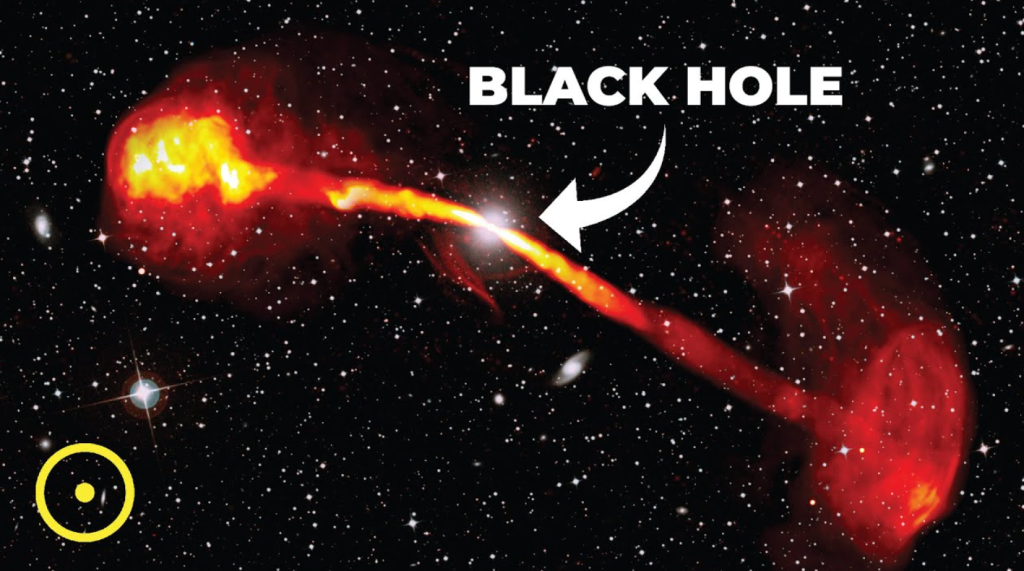IC 4296 is a fascinating giant elliptical galaxy, known for its unique radio emissions. As a type 1 radio galaxy, it exhibits an intriguing pattern where the brightness of its radio emissions decreases as you move outward from the galaxy’s center. In contrast, some other galaxies, called FR2 radio galaxies, show brighter emissions in their outer regions.

At the core of IC 4296 lies a supermassive black hole, with a mass equivalent to about a billion Suns. This black hole powers the galaxy’s intense radio emissions. As matter spirals toward it, it generates vast amounts of energy, some of which is funneled into jets—streams of charged particles that travel nearly at the speed of light. These jets extend almost a million light-years from the galaxy, interacting with the surrounding intergalactic medium and creating stunning structures visible in radio images.
The bright central region of IC 4296 represents the location of the supermassive black hole. From this core, two jets extend in opposite directions, carving intricate patterns as they interact with space. Faint radio threads below the galaxy provide a glimpse into the dynamics of these jets. These threads are formed by electrons that have escaped the jets and drifted through space, revealing the conditions of the intergalactic medium.
Between the bright jets and their outer lobes, smooth ribbons of radio emissions can be seen. These ribbons fill channels carved by older jets during past periods of activity. The ribbons signify the remnants of past interactions between the jets and the surrounding gas, eventually halted by intergalactic gas nearly a million light-years away from the galaxy. This interaction forms “smoke rings” visible in the radio lobes.
IC 4296, located about 160 million light-years from Earth, provides valuable insight into the behavior of supermassive black holes and the forces at play in radio galaxies. The study of such galaxies enhances our understanding of galaxy evolution and the role of black holes in shaping their environments.
This remarkable image was captured by the MeerKAT radio telescope in South Africa, one of the most advanced instruments of its kind. The telescope’s ability to capture high-resolution images of the universe allows astronomers to study the complex interactions of jets and their environment, revealing new aspects of galaxy formation and black hole behavior. The precision of MeerKAT, alongside its wide-field capability, makes it an invaluable tool for cosmic research. The discoveries made through these observations are already challenging existing theories and offering exciting new insights into the universe.